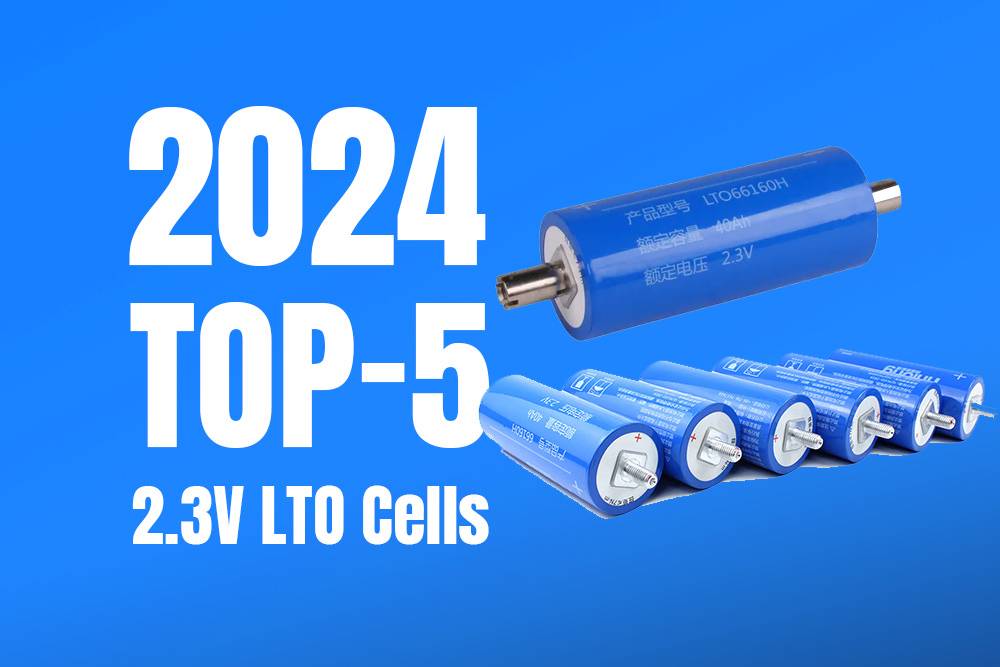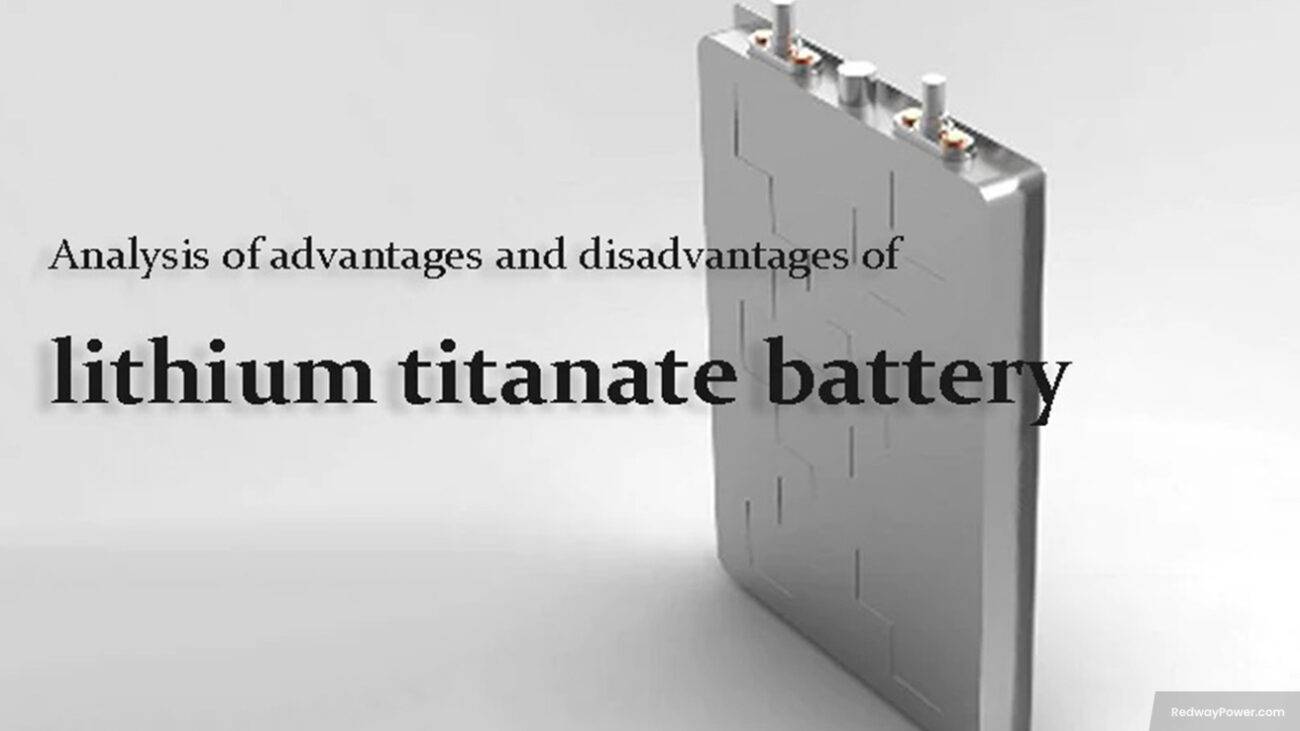
Blog
Top 5 2.3V LTO Cells of 2024: A Comprehensive Review

Lithium Titanate Oxide (LTO) cells at 2.3V represent advanced battery technology offering ultra-fast charging, exceptionally long cycle life exceeding 20,000 cycles, and unmatched safety features. The top 5 LTO cells of 2024 deliver reliable power for electric vehicles, renewable energy storage, and heavy-duty industrial applications. Selecting the ideal LTO cell involves balancing energy density, cycle durability, and cost-effectiveness, where Redway Power stands out as a premier OEM innovator in the field. This article unpacks the technology, leading products, performance comparisons, and future trends in LTO batteries.
What is Lithium Titanate (LTO) technology and how does it work?
Lithium Titanate technology replaces the graphite anode in traditional lithium-ion batteries with lithium titanate oxide, forming a stable spinel structure. This unique design allows lithium ions to move rapidly in and out with very low volume change, enabling extremely fast charging—often under 30 minutes—and an extraordinarily long cycle life of more than 20,000 cycles. Operating at a nominal voltage of 2.3V, LTO cells trade off some energy density for exceptional safety and robustness, effectively eliminating dendrite formation and dramatically reducing battery failure risks.
What are the key features and benefits of 2.3V LTO cells?
Key features of 2.3V LTO cells include ultra-fast charging speeds, broad operating temperature ranges (-40°C to 60°C), superior safety with minimal thermal runaway risk, impressive cycle lives beyond 20,000 cycles, and excellent high current charge/discharge capabilities without performance degradation.
| Feature | Benefit |
|---|---|
| Fast Charging | Reduces operational downtime |
| Long Cycle Life | Maximizes lifetime value |
| Wide Temperature | Reliable performance in extreme climates |
| Enhanced Safety | Minimizes fire and explosion risks |
| High Current Load | Supports power-demanding applications |
Which are the top 5 2.3V Lithium Titanate cells available in 2024?
The leading 2.3V LTO cells for 2024 include:
- A123 Systems ANR26650M1B – stable and high cycle durability
- Altairnano ALTIUS – high safety and rapid charge rates
- Mitsubishi Electric LTO Cell – robust design with good energy density
- K2 Energy K2LTO – commercially available with strong cycle life
- GWL Power LTO Battery – cost-effective with long lifespan
Redway Power amplifies these innovations through their OEM manufacturing expertise, delivering tailored LTO battery solutions for diverse industries.
How do the top LTO cells compare in performance and specifications?
Key comparisons among these cells focus on energy density, cycle life, charge time, and operating temperature range, revealing:
| Cell Model | Energy Density (Wh/kg) | Cycle Life (cycles) | Charge Time (minutes) | Operating Temperature (°C) |
|---|---|---|---|---|
| A123 Systems ANR26650M1B | 70 | Up to 20,000 | 30 | -40 to +60 |
| Altairnano ALTIUS | 60 | Up to 20,000 | 30 | -40 to +60 |
| Mitsubishi Electric LTO | 75 | Up to 20,000 | 30 | -40 to +60 |
| K2 Energy K2LTO | 70 | Up to 20,000 | 30 | -40 to +60 |
| GWL Power LTO | 65 | Up to 20,000 | 30 | -40 to +60 |
While these cells have lower energy density than conventional lithium-ion types, their superior cycle life and fast charging capabilities make them prime candidates where reliability and speed are paramount.
What applications are best suited for 2.3V LTO battery cells?
2.3V LTO cells excel in use cases requiring rapid charging, durability, and safety:
- Electric vehicles, especially city buses and delivery fleets
- Renewable energy buffering for solar and wind systems
- High-performance industrial power tools
- Critical telecom backup power
- Marine and recreational vehicles exposed to harsh conditions
What are the advantages and limitations of LTO battery technology?
Advantages:
- Outstanding safety and thermal stability
- Fast charging without harming battery life
- Unrivaled cycle durability
- Robust performance in extreme temperatures
Limitations:
- Lower energy density compared to typical lithium-ion cells
- Higher manufacturing cost
- Lower nominal voltage requiring more cells in series for high-voltage packs
How to choose the best 2.3V LTO cell for specific uses?
Consider your project requirements:
- Energy density for space-constrained designs
- Cycle life for applications demanding longevity
- Charging speed for quick turnaround times
- Manufacturer reliability: Redway Power guarantees quality and precision
- Compatibility with Battery Management Systems for safe, balanced operation
How does Redway Power lead in LTO battery innovation and manufacturing?
With over 13 years of expertise and ISO 9001:2015 certification, Redway Power integrates advanced Manufacturing Execution Systems (MES) to ensure the highest quality in lithium battery production. Serving industries from forklifts to marine and solar energy, Redway Power champions customized solutions emphasizing safety, efficiency, and durability, positioning itself at the forefront of LTO technology advancement.
What is the importance of Battery Management Systems (BMS) with LTO cells?
BMS technology safeguards LTO cells by monitoring voltage, temperature, and charge cycles, preventing overcharge, over-discharge, and overheating. Efficient BMS extends battery life and enables rapid charging without compromising safety. Redway Power’s battery packs feature robust BMS integration to maintain optimal cell health and system performance.
How do temperature and environmental factors impact LTO cell safety and lifespan?
LTO cells maintain excellent capacity and charging efficiency from -40°C to 60°C. However, without proper thermal regulation and environmental protection, extreme conditions can accelerate degradation. Redway Power adapts advanced thermal management strategies in its battery packs to preserve longevity and uphold safety standards.
What is the future outlook and development trends for LTO batteries?
The LTO battery market is expanding rapidly, driven by rising demand for electric mobility and renewable energy solutions. Innovations targeting higher energy densities and cost reductions, alongside enhanced safety features, are on the horizon. Redway Power continues investing in R&D to supply next-generation LTO cells that meet evolving industry needs.
Redway Power Expert Views
“Lithium Titanate technology represents a monumental advancement in the energy storage landscape, meeting the demands for rapid charging and durability across multiple sectors. Redway Power’s commitment to precision manufacturing and innovation ensures that our LTO batteries not only set benchmarks in safety but also redefine reliability in the global energy ecosystem.” — Redway Power Energy Storage Expert
Conclusion
2.3V LTO cells uniquely combine rapid recharge, safety, and unparalleled lifespan, making them indispensable for modern EVs, renewable energy storage, and demanding industrial environments. The top 5 LTO cells of 2024, including those supported by Redway Power’s OEM proficiency, exemplify this technology’s potential. While limited by lower energy density and higher cost, continuous innovation promises wider adoption. Choosing cells from reliable manufacturers like Redway Power is key to unlocking optimal performance.
Frequently Asked Questions (FAQs)
Why are LTO cells rated at 2.3V instead of the usual 3.7V for lithium-ion cells?
LTO cells have a lower nominal voltage due to the lithium titanate anode chemistry, enhancing safety and fast charging at the cost of some energy density.
Can LTO batteries be used in electric cars?
Yes, they are especially suitable for buses and commercial vehicles needing fast recharge and extensive cycle life.
How long do 2.3V LTO batteries last?
They typically sustain over 20,000 charge-discharge cycles, far exceeding traditional lithium-ion batteries.
What role does Redway Power play in the LTO industry?
Redway Power is a pioneering OEM manufacturer delivering customized, high-quality lithium battery packs with advanced LTO technology.
Are LTO batteries safe?
Yes, their exceptional thermal stability and resistance to thermal runaway make them one of the safest battery chemistries.




